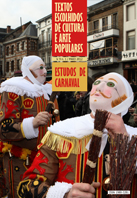CARNAVAL IN THE 1940s: THE MANY FANTASIES OF A REVELER RIO DE JANEIRO
DOI:
https://doi.org/10.12957/tecap.2012.10274Keywords:
POPULAR PARTY, CARNAVAL, URBAN DECOR, SAMBA SCHOOLS, RIO DE JANEIRO, BRAZIL.Abstract
This article traces a brief history of carnaval demonstrations in the city of Rio de Janeiro in the 1940s, observing how these manifestations responded to historical events such as World War II and the period of government called Estado Novo (1937-1945). The consolidation of the carnaval party as a symbol of this city is marked not only by the self-assertion of its newest and indomitable revelers’ manifestation – the samba schools parade – but also by the government’s initiative to organize, in a systematic way, the ornamentation of the city’s main streets. The strategy would follow the already established model of decorations of ball halls, giving the party a new dimension in which the city undergoes a gigantic scenographic metamorphose, whose trajectory collaborates to the very spectacle of Rio’s Carnival.Downloads
Published
2012-05-01
How to Cite
Guimarães, H. M., & Santos Filho, R. D. dos. (2012). CARNAVAL IN THE 1940s: THE MANY FANTASIES OF A REVELER RIO DE JANEIRO. Textos Escolhidos De Cultura E Arte Populares, 9(1). https://doi.org/10.12957/tecap.2012.10274
Issue
Section
Articles
License
Autores que publicam nesta revista concordam com os seguintes termos:- Autores mantém os direitos autorais e concedem à revista o direito de primeira publicação, com o trabalho simultaneamente licenciado sob a Licença Creative Commons Attribution que permite o compartilhamento do trabalho com reconhecimento da autoria e publicação inicial nesta revista.
- Autores têm autorização para assumir contratos adicionais separadamente, para distribuição não-exclusiva da versão do trabalho publicada nesta revista (ex.: publicar em repositório institucional ou como capítulo de livro), com reconhecimento de autoria e publicação inicial nesta revista.
- Autores têm permissão e são estimulados a publicar e distribuir seu trabalho online (ex.: em repositórios institucionais ou na sua página pessoal) a qualquer ponto antes ou durante o processo editorial, já que isso pode gerar alterações produtivas, bem como aumentar o impacto e a citação do trabalho publicado (Veja O Efeito do Acesso Livre).

